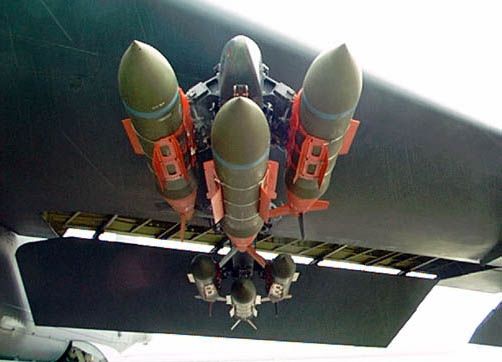gambit
PROFESSIONAL

- Joined
- Apr 28, 2009
- Messages
- 28,575
- Reaction score
- 148
- Country
- Location
Absolutely we do. A lot of it...Thanks for an attention to my simple remark. Including quote from CV and basics for math methods of 3D objects modeling.
Guess next question will be on physical or geometrical optics.
So US researchers never use physical modeling?
Technically speaking, it is 'RCS control'. Not 'RCS reduction'. In theory, if you can control something, you can manipulate its characteristics, behaviors, and appearance.
In RCS control, these things are in order:
- Prediction
- Modeling
- Measurement
With the advent of computers, we can swap Modeling and Prediction, but the final arbiter is always Measurement and the best is always with full scale. But back in my days, as in pre-historic (Internet), we first predict on paper on how a shape or combinations of shapes would behave under radar bombardment, then we would make scaled models, then we would subject all those models under real radar bombardment and take measurements. The closer that Prediction and Measurement are to each other, the more we know both mathematical and real models are accurate. In the early days of RCS control methodology, wildly off the mark was the norm, simply because we did not have Ufimtsev's work. We owe much to the good Doc, but in no way is he the 'father of stealth' as many tried to portray him. Even he did not know the practical utility of his work. Neither did the Soviets and that is why they let him published his work to the public. Ooopsie...


The above is just about my favorite illustration on how any radar system actually PERCEIVE any complex body, be it a human being, the Eiffel Tower, or an airliner. The regulars of this forum have seen it before and properly enlightened on the basics of radar detection processes.
Each one of the many spikes is actually a composite of many smaller voltage spikes produced by many smaller structures that make up many larger structures.
Two things:
- Destructive interference
- Constructive interference
The more complex the body, the higher the unpredictability of interference. Therefore, the first goal is to minimize the quantity of radiation points, or radiators, that could be conducive towards both types of interference. The second goal is to configure any radiator in any way possible so that the seeking radar will either receive no or very little radiation from those radiators.
For example...

The above is an absolute EM nightmare. So we can control it by enclosing weapons either inside the aircraft or inside a much more streamline carrier pod.
Anyway...Getting back to our airliner and its graph of voltage spikes. If below the graph is the 'stealthy' region, then our aircraft is obviously 'non-stealth'. We would not know this unless we actually perform measurement of full scale models, not just mathematical predictions.
In looking at our physical modeling and measurement data, the first target in our RCS control tactic would be that huge spike. We need to find out mathematically what caused it. On paper, we would reconfigure that area (Prediction), then we would make scaled models (Modeling) of our new complex body, then we would subject them to radar bombardment (Measurement). If our process is successful, that area of the aircraft would be inside the 'stealth' region.
While one team is working on that huge spike, another team could be working on the next highest, another team on the spike right below that, and so on...The danger here is that one team could find out no matter what, an area of the aircraft can only be reduced so much and that despite all the work, the spike from that area would still be prominent.
If the goal is to produce a 'stealth' fighter, we have to scrap our current design and start anew. Then the entire flow starts all over again: Prediction/Modeling, then Measurement.
Physical modeling is extremely important. Do you what is a 'radar range'?
National Radar Cross Section Test Facility (NRTF)
The National Radar Cross Section (RCS) Test Facility (NRTF) is the premier DoD facility for RCS testing. Formerly known as RATSCAT, which began measuring radar scattering in 1963, it is comprised of two complementary sites, Mainsite and RATSCAT Advanced Measurement System (RAMS). Assigned to the U.S. Air Forces 781st Test Squadron, NRTF is located west of Holloman Air Force Base, New Mexico in a rolling gypsum region of WSMR. NRTF specializes in the RCS characterization of full-scale, aerodynamic vehicles and antenna radiation pattern development.
Do you know what is an 'EM anechoic chamber'?
Benefield Anechoic Facility - Wikipedia, the free encyclopedia
An EM anechoic chamber isolate the body from environmental EM contamination, even as low a signal as cosmic background radiation. The body is effectively sealed off from the outside world. Inside, we can have over 95% accurate estimate of what is the body's true EM behavior from many precise angles of radar bombardment.Benefield Anechoic Facility (BAF) is an anechoic chamber located at the southwest side of the Edwards Air Force Base main base. It is currently the world's largest anechoic chamber.
A radar range is essentially an open field with completely uncontrolled EM contamination from space sources, radio, TV, etc. With both types of measurement of a full scale physical model, we will have the best possible data of our 'stealth' design. We can have the loop of Prediction and Modeling for several evolutions of our design, but we will never know for certain until we actually break the loop and have Measurement of a full scale model. Then starts all over if necessary.
No one is currently better than US at this process.





